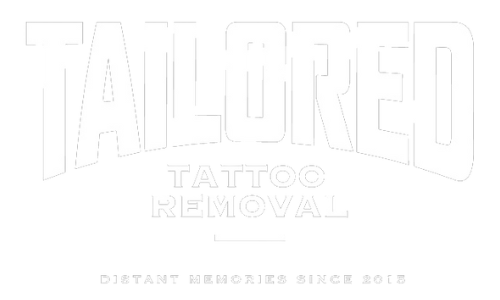Lies, Myths and FACTS
by Dr. Messina
Lasers for tattoo removal have been in use since 1964 and known as the Q-Switch or Quality switched lasers. They have a property that is very important for safe laser tattoo removal , they fire so rapidly that very little heat is transferred to the tattoo ink.
This is an important point because all lasers seek something to target the beam of laser light upon. The lasers for tattoo removal target coloured pigment. Since a tattoo is significantly larger and darker than normal skin pigments the risk of absorbing to much heat in the form of photo-thermal energy ( light heat ) and burning or scaring the individual. That is why a laser for hair removal is not used for laser tattoo removal under any circumstance.
The Q-Switch laser is Photo-Acoustic so heat transfer is minimal and the breaking of the tattoo ink is secondary to an acoustic trauma. Q-Switch lasers for tattoo removal fire in a Billionth of a second or a Nano-second. These Q -Switched lasers have been the gold standard for tattoo removal for 60 years and a quality laser can indeed remove tattoos very well, In fact Q-Switched lasers are the only type I use in the practice and I have been lasering tattoos for almost 15 years . Thus, I speak from experience.
Since the essence of laser tattoo removal is to shatter the ink into small particles that the immune cells can now pick up and cary off the thought arose, what if we made the particles even smaller using a laser that fires even faster than the Q -Switched Nanosecond lasers and developed a Picosecond laser. The picosecond lasers fire faster but is the result any better?
Picosecond lasers have also been around over a decade but this is the first time they are in a laser box that can fit into the average medical office. The Picosecond lasers fire in Pico-seconds or a trillionth of a second. The premise being the pico firing that fast would create a finer dust from the ink and the cells could carry that dust of ink off easier and faster. Unfortunately Picosecond lasers come with alot of lies and myths as to what they can do for your tattoo removal. Much of the information regarding their ability to remove tattoos is both unrealistic and often false. I reviewed many videos and found significant false statements such as a pico can remove any colour of ink, (no laser can) or it will not remove skin colour known as hypopigmentation (it certainly can). Treatments with a pico will be scar free. (This is a 100% false) you can get scarring from any type of laser if not used by a trained professional.
The Pico-second lasers were marketed as lasers that would cut the number of treatments in half with less complications due to even less heat than the remarkably low heat released by the Q-Switched variety. However, there was a cost to this new technology, the price of these lasers could reach $300,000. The promise of less treatments was not fulfilled and although these lasers made a fine dust two things became obvious…
The initial ink loss was to fine to make a noticeable difference in the ink load thus it was recommended that Q-Switch lasers be used in the first 4-5 sessions.
The number of laser tattoo removal treatments was NOT reduced and still the average tattoo required 10 sessions. However, these sessions require 12 weeks of rest in between so in reality the patient has the tattoo longer when using a Picosecond laser.
It is for these reasons that the practice of Dr Undo Tattoo does not use picosecond lasers for tattoo removal and continue to use the Q-Switch lasers with outstanding results. In my opinion the best laser for tattoo removal is a quality Q-Switched laser. I simply can not justify the additional cost to my patients for really little or no benefit.
One huge problem with Q-Switched vs Picosecond lasers is the variability of laser systems. In the "old" days the majority of the Q-Switched lasers were YAG lasers with or without a KTP laser adaptor to target reds. This made comparing one laser to the next easy. It was simple to look at the results and determine which lasers were strong, which lasers for tattoo removal were moderate and which laser for tattoo removal were weak. This is less so for the Picosecond lasers because each manufacturer had released them with different wavelengths. this means some were Alexandrite lasers so they would be great on green, less on blue , poor on black and nothing for red. Another laser company may release a Pico with YAG and KTP so its good on black, red but no so for green and blue ink while a third laser company may have a Ruby laser which is great for blue, slightly less for green and black but again nothing for red. Thus when patients ask is Picosure better than Enlighten and is Enlighten better than another brand and you can’t honestly tell due to the variability of laser wavelengths in each system.
Dr. Messina is a practicing physician since 1986 Board Certified in Anaesthesia / Critical Care with training in Internal Medicine. This channel discusses a wide variety of medical topics from Intensive Care, COVID-19, General Medical issues, Aesthetic medicine which includes Botox and Dysport Injections, Dermal Fillers such as Juvederm, Radiesse, Restylane , Belotero and others as well as laser rejuvenation. These treatments are a big part of anti aging medicine and restoration. Dr. Messina added laser tattoo removal to the practice in 2005 and was nicknamed " Dr. Undo Tattoo" from his patients.
